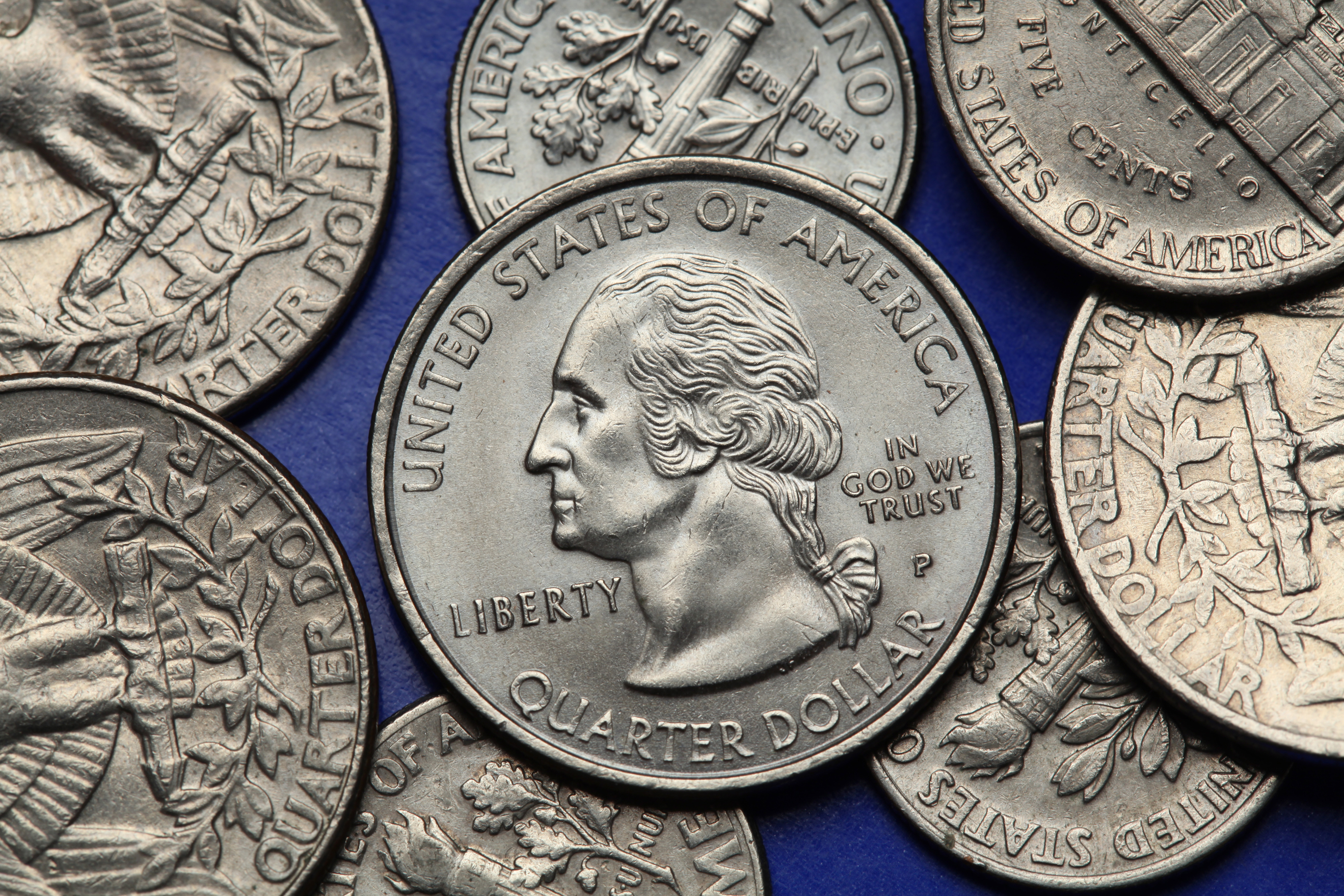The Evolution of the U.S. Quarter: From Silver to Copper-Nickel
Written by Arbitrage • 2025-10-06 00:00:00

When traders and investors refer to "quarters," they typically mean fiscal quarters. But for coin collectors, economists, and historians, quarters tell a story of changing materials, monetary policy, and inflation. The United States 25-cent piece has undergone significant evolution since its introduction in 1796, reflecting shifts in silver supply, global economics, and government policy.
Early Quarters: Silver as Money (1796-1964)
The first U.S. quarters were minted in 1796 and struck in 90% silver and 10% copper. For more than 150 years, quarters retained this silver-heavy content, making them not just currency but a small store of intrinsic value. By the mid-20th century, a single quarter contained roughly 0.18 troy ounces of silver.
For traders, that means every roll of 40 quarters minted before 1965 contained nearly 7 ounces of silver, making them worth far more than face value when silver prices rose. These "junk silver" coins remain popular among bullion investors due to their high metal content.
The Big Shift: Clad Coinage (1965-Present)
Silver's rising value during the 1960s created an economic imbalance: the metal inside the coin was worth more than 25 cents. In response, the U.S. Mint changed composition in 1965. The "clad" quarter was born, with an inner core of copper sandwiched between outer layers of 75% copper and 25% nickel. This made modern quarters inexpensive to produce and impossible to melt profitably. But it also marked the end of quarters as a hedge against inflation; their value became purely symbolic, untied from precious metals.
Special Issues: Bicentennial and Silver Proofs
- Bicentennial Quarter (1975-1976): Featuring a colonial drummer on the reverse, these coins celebrated America's 200th birthday. They were clad like standard quarters, but 40% silver collector editions were also struck.
- Silver Proof Quarters: The Mint continues to produce special proof sets in 90% silver (later 99.9% silver) for collectors and investors. These command higher prices because of their bullion content.
Today's Quarters: Symbols, Not Silver
Modern quarters are more about commemoration than content. Programs like the 50 State Quarters, America the Beautiful, and the new American Women quarters turn circulating change into miniature history lessons. But for investors, their metal value is negligible - a far cry from the pre-1965 silver days.
Financial Takeaways for Traders
- Intrinsic vs. Nominal Value: Old silver quarters remain tied to bullion prices, while modern quarters are purely fiat.
- Hedging Lessons: The removal of silver in 1965 reflects how governments manage inflationary pressures by removing precious metals from circulation to preserve stability.
- Collector Premiums: Rare mintages, silver proofs, and historical series can hold numismatic value, offering a different kind of diversification.
Conclusion
The U.S. quarter's journey from silver to clad coinage mirrors the broader financial evolution from hard money to fiat currency. For traders, it is a reminder: the materials behind money matter. Whether you're stacking silver quarters for their bullion or analyzing the Federal Reserve's next move, history shows us that the value of money isn't fixed; it's engineered.